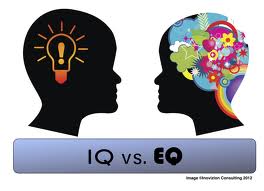By Rola Hallak
Once upon a time in the olden days, the teacher stood out front and taught the whole class the same material in the same way. Everyone was expected to do the same tasks, some passed and some failed and were labeled ever after. The focus was on teaching, not on learning. One size was supposed to fit all and if you learned in a different way, too bad for you
Time passed and it turned out that everyone didn’t learn in the same way after all. The teacher realized that learners have different needs, interests and abilities. Differentiated instruction was invented. The teacher prepared different tasks for each group in her class and preparation now took a whole lot longer. The needs of the learner were being better catered for, but the teacher was up all night
She needed to think about differentiation in a different way. Based on my personal experience gained from professional readings as well as trials and errors throughout the process of my professional development, I think differentiated instruction can be summed up in 10 ways
Let go
Give the students some ownership of their own learning. Empower them. Don’t always be the boss of the class, be part of the community of learners. Don’t make all the decisions. Allow choice. Encourage students to think about how they learn best. Have students decide how to demonstrate their learning
Change your expectations
One size does not fit all. Why is there still an expectation that people, with their differences, will all fit into a particular framework for learning? I have been annoyed by moms competing over their kids’ talents and skills. I mean those of the same age group. It is essential to understand that every learner develops at his pace, and as product, both the process and purpose might vary from one learner to another
Change the sequence
Learners don’t need total mastery of all the skills before they can apply them. Provide meaningful, authentic learning opportunities for everyone. As an educator, after deepening my understanding of UBD, I was more able to apply the fluidity of learning represented by the AMT frame shown in the figure below. I changed in a way that I started to start from the M, which is Make meaning of big ideas, rather than with the A, which is Acquire knowledge and skills necessary for a summative authentic assessment task. Given a real life problem to explore first, students are more motivated to learn the skills required to solve it!

I suggest turning Bloom’s taxonomy on its head. It’s the same principle as the one above. Provide opportunities for higher order thinking and creating meaning, through authentic learning tasks and situations, even if the basic skills haven’t been perfectly mastered. Grant Wiggins’ analogy involves playing football. You can’t expect kids to just do the drill and never play the game. They need to have some drill, then have a go at the game, then be coached in the skills they need to work on, and then play the game again! Otherwise, some kids spend their whole school life in an endless series of sideline drills and never get to play the game

Use technology creatively
Blogging, film making, global interactions, social media, online surveying, gaming, and much more! All provide naturally differentiated opportunities for learners with varied levels of ability, different interests and special talents. Recently, I have shared top twenty websites for preparing kids for college and turning them into smarter individuals. Here it is:
http://www.lifehack.org/articles/technology/20-excellent-websites-that-make-your-children-smarter.html
Care about what matters to them
Encourage learners to follow their interests. Know their story. It’s important to remember that everyone has a story. As educators, we need to know every child’s story, who she/he is, her/his strengths and weaknesses, her/his history, her/his thoughts and passions. As a school, it’s important to have a shared story that tells of our beliefs and our vision. For some of us, it takes time and experience to figure out our own story. Thus, to differentiate is to make their learning relevant, connect with their passions, or help them to discover what they might be
Assess for learning
It’s not about a test at the end. Record student thinking and track development over time. Create meaningful assessment tasks that allow transfer of learning to other contexts. For now, why not replace some traditional testing with opportunities for creative expression? However, what are the alternative assessments? They include creating a visual or cartoon, performing a play, making a video, thinking routines such as concept mapping, composing a song, and many others. Thus, it is essential to think of everything as an assessment. Every piece of work, every blog post, every interaction, every conversation can tell us where a learner is at and where they need to go
Embrace inquiry as a stance
Create a culture of thinking, questioning, wondering and exploring. This could eventually happen by modeling thinking, allowing thinking time, providing opportunities for thinking, creative a physical environment conducive for thinking, introducing thinking routines, and value/celebrate students’ thinking. Starting with a “provocation” that gets our learners thinking and wondering right away is powerful enough to arouse their curiosity, so they’ll be right inside the unit immediately, engaging with big ideas, asking relevant questions and motivated to inquire and explore further
Don’t be the only teacher
Students can learn from their peers, other teachers, parents, their on-line contacts, the world. Help them build their own personal learning networkwith and from whom they can learn. Thus, learning is not limited by the walls of the classroom and expands to reach experts and other people
Focus on learning, not work
Make sure you and your students know the reason for every learning experience. Don’t give ‘busy work’. Don’t start by planning activities, start with the ‘why‘, and then develop learning experiences which will support independent learning of targeted content. Inspirational teachers think, act and communicate from the inside of the circle outward

Encourage goal setting and reflection
Help students to define goals for their learning. Provide opportunities for ongoing self-evaluation and reflection. Provide constructive, specific feedback. Student blogs are great tools for reflecting on learning and responding to their peers
I am a teacher in the story above. I am the kind of person who got educated within a system which believes one outfit fits all. I am the person who rebelled against traditional teaching to make better learning
At last, what is the difference between personalized, differentiated and individualized instruction? That is the question I have frequently asked to my everlasting inquiring mind. Thanks to Barbara Bray, being part of my personal learning network, for sharing the table in the link below
http://www.slideshare.net/bbray/personalizedlearninchart
































